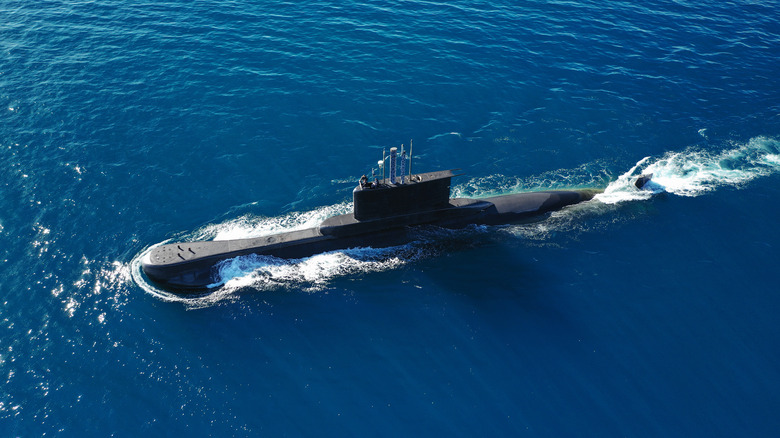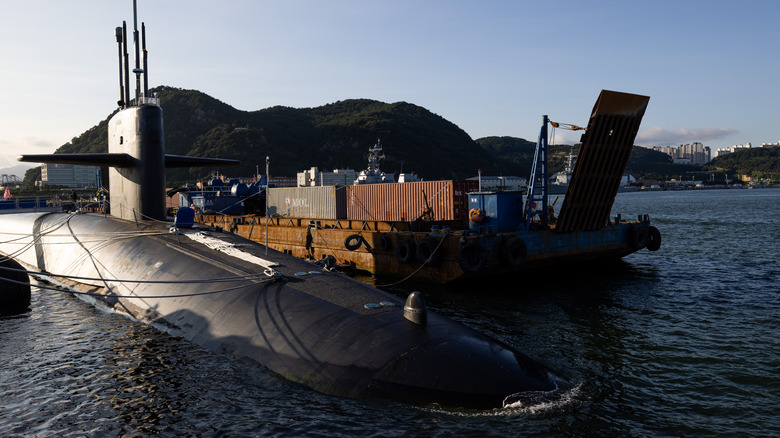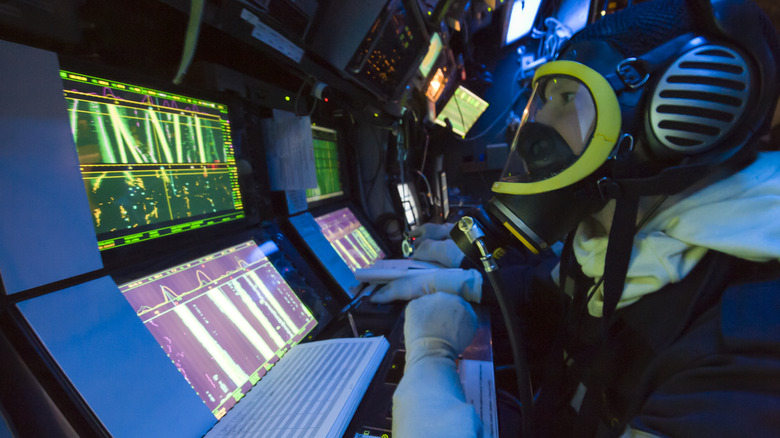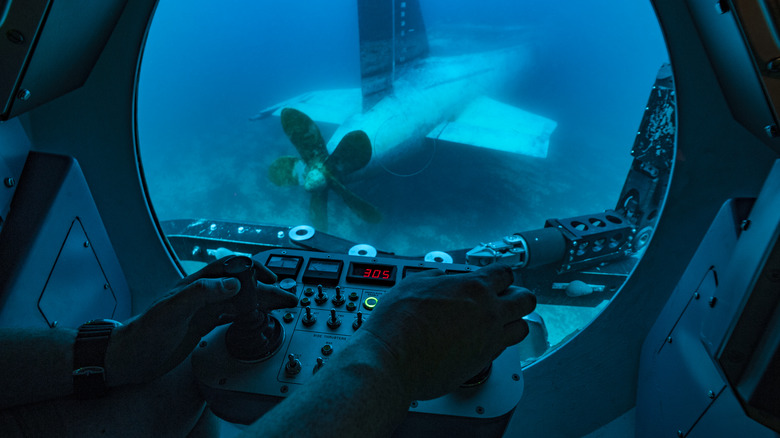Why Modern Submarines Are Nearly Impossible To Detect
Recently, the rise of satellite technology and its availability for commercial use has made it possible for ordinary people to experience the world in more convenient ways. However, it has made things a nightmare for countries to conduct routine military surveillance operations, especially in the water.
Unfortunately, this causes a variety of issues, especially because submarine warfare requires stealth as a primary component. Often, submarines are used for covert operations, such as when it comes to monitoring neighboring countries or making sure key communication lines are not tampered with.
In May 2023, USA Today shared that the U.S. Navy wanted to spend $5.1 billion on a high-tech spy submarine that could put it one step ahead of seabed warfare with Russia and China. With the seabed being home to things like oil pipelines and telecommunication cables, the ocean is becoming a battleground worth fighting for because of its undeniable impact on national security.
Because stealth is a non-negotiable aspect of submarine warfare, it makes sense that much of its technological advancement relies on its ability to move as quietly as possible. For this reason, naval military forces from all over the world have been working to develop submarines in order to make it nearly impossible to detect and train their people to fight more effectively underwater.
Advances in Submarine Stealth Materials
One way that modern submarines or submersibles manage their acoustic signature is through their materials. To avoid corrosion from the constant seawater exposure, subs need to be made of non-corrosive material that is also dense and lightweight.
In addition, since the first successful submarine attack in 1864, submarines have been made with explosions in mind. After all, the H.L. Hunley met its demise after ramming a contact mine, which caused it to sink. With this, it's no wonder that Marine Insight shares that submarines should also be designed to withstand possible detonations from mines and underwater gas bubbles.
Typically, many older submarine models were made of steel, which isn't just strong and durable but also lightweight and not as prone to seawater rust. However, through the years, scientists have been experimenting with additional materials, like Titanium and Aluminum, and even creating new composite materials entirely.
For example, Qinetiq announced a collaboration with Australia's Department of Defence to develop new acoustic materials to reduce the probability of submarine detection in 2019. In addition, Qinetic also secured contracts with the United Kingdom's Royal Navy and supported them while testing newer composite materials for their submarine fleet.
Improved Propulsion Systems
Compared to older models, modern submarines also have better propulsion systems. In 2017, Popular Science shared how China developed revolutionary nuclear attack submarines with a "shaftless" rim-driven pumpjet and a silent propulsion system. With the removal of the propeller shaft, Chinese submarines not only reduced their overall noise but also became easier to maintain.
In addition, some of the newest Chinese submarines are also designed with an integrated electrical propulsion system (IEPS), which transforms all the output of the ship's engine into usable electricity. Next Big Future claims that the electrical output from the IEPS won't just power propellers but potentially high-energy weapons as well.
Because of these developments and fewer overall moving parts to maintain, modern submarines make it more difficult for other units to detect their passive acoustic signatures, which is definitely a game-changing method for evading detection through Sound Navigation and Ranging (SONAR) technology.
Countermeasures against SONAR technology
With the ocean filled with myriad sounds from its billions of inhabitants, submarines use SONAR to find their way around. While both ships and submarines use SONAR, submarines rely on it more heavily due to not being able to use Radio Detection and Ranging (RADAR) underwater.
Two types of SONAR technology are used in submarines: passive and active. For passive SONAR, military operators use sound-receiving systems to listen for any sound. Although it's good for tracking animals, an Atlantic Fleet Training and Testing document claims that passive SONAR is no longer adequate for modern submarines, especially in coastal waters with distracting background noises.
On the other hand, active SONAR, which sends our pulses of energy to locate objects, poses an entirely new set of problems. Aside from potentially making humans panic or rupture their organs, active SONAR risks revealing the location of the vessel sending the ping. In addition, Scientific American claims that military SONAR could also threaten the local wildlife by causing temporary deafness, permanent injury, and even death.
To counterattack detection by active SONAR technology, submarine crews employ several tricks to make them difficult to find. In 2021, the U.S. Navy joined forces with Leidos Inc. to develop advanced active acoustic countermeasures for its submarine forces, which included methods to deceive sonar guidance systems.
Underwater Geography and Tactics
While the technology is enough to make modern subs difficult to find, the reality is that it could be due to improved underwater tactics. Since the first submarine's launch, naval forces worldwide have had much time to develop their understanding of underwater geography and how this can be used to their advantage.
According to the National Oceanic and Atmospheric Administration (NOAA), the ocean is divided into different horizontal layers, wherein the speed of sound behaves differently. Due to varying temperature and pressure, the speed of sound adjusts accordingly. Discovered in the 1940s, Sound Fixing and Ranging (SOFAR) is a key channel for submarine warfare, especially because it is where the speed of sound is at its minimum.
While scientists typically use SOFAR for studying whale calls and earthquakes, it has played a critical role in the range detection of submarines. Using sound surveillance, the U.S. military could detect and neutralize Soviet submarines during the Cold War. With time, naval officers have also improved at using these layers to disrupt tracking and travel more effectively.
In 2017, UNESCO launched Seabed 2030, a project designed to map the world's oceans. At the time, only 6% of the oceans had been mapped to modern standards. By 2023, nearly a fifth of the world's ocean floor has been mapped to modern standards. With this kind of increased data, submarine operations worldwide have improved their ability to use the ocean to keep themselves hidden.




